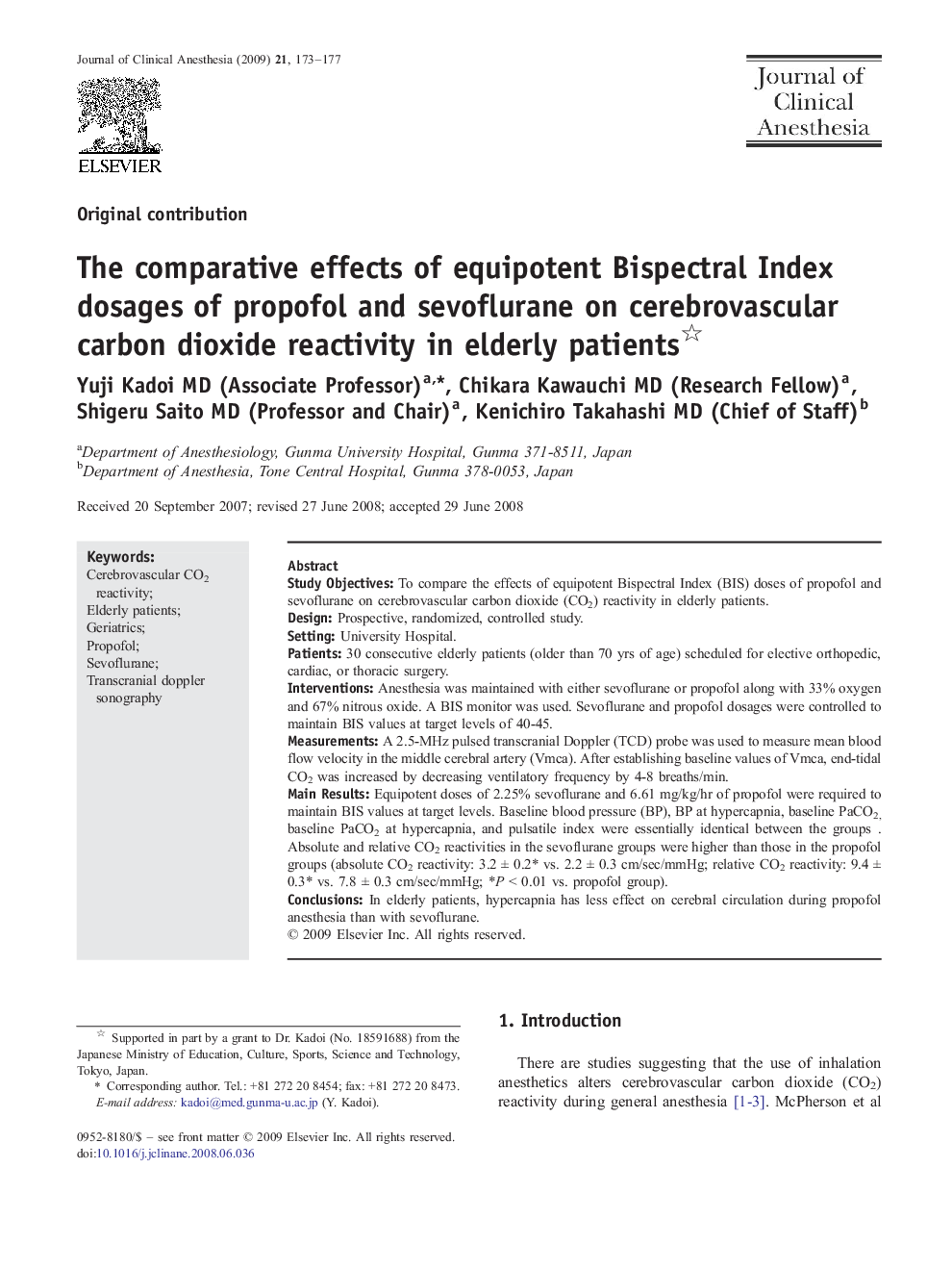| Article ID | Journal | Published Year | Pages | File Type |
|---|---|---|---|---|
| 2763526 | Journal of Clinical Anesthesia | 2009 | 5 Pages |
Study ObjectivesTo compare the effects of equipotent Bispectral Index (BIS) doses of propofol and sevoflurane on cerebrovascular carbon dioxide (CO2) reactivity in elderly patients.DesignProspective, randomized, controlled study.SettingUniversity Hospital.Patients30 consecutive elderly patients (older than 70 yrs of age) scheduled for elective orthopedic, cardiac, or thoracic surgery.InterventionsAnesthesia was maintained with either sevoflurane or propofol along with 33% oxygen and 67% nitrous oxide. A BIS monitor was used. Sevoflurane and propofol dosages were controlled to maintain BIS values at target levels of 40-45.MeasurementsA 2.5-MHz pulsed transcranial Doppler (TCD) probe was used to measure mean blood flow velocity in the middle cerebral artery (Vmca). After establishing baseline values of Vmca, end-tidal CO2 was increased by decreasing ventilatory frequency by 4-8 breaths/min.Main ResultsEquipotent doses of 2.25% sevoflurane and 6.61 mg/kg/hr of propofol were required to maintain BIS values at target levels. Baseline blood pressure (BP), BP at hypercapnia, baseline PaCO2, baseline PaCO2 at hypercapnia, and pulsatile index were essentially identical between the groups . Absolute and relative CO2 reactivities in the sevoflurane groups were higher than those in the propofol groups (absolute CO2 reactivity: 3.2 ± 0.2* vs. 2.2 ± 0.3 cm/sec/mmHg; relative CO2 reactivity: 9.4 ± 0.3* vs. 7.8 ± 0.3 cm/sec/mmHg; *P < 0.01 vs. propofol group).ConclusionsIn elderly patients, hypercapnia has less effect on cerebral circulation during propofol anesthesia than with sevoflurane.
